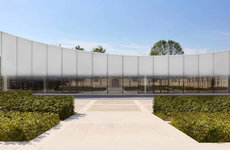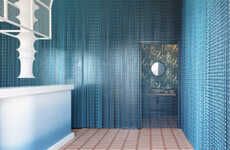
Paul Fraillon Imagines a High-Class Establishment Along the Seine
Jamie Danielle Munro — August 8, 2014 — Art & Design
References: designboom
Architect Paul Fraillon has imagined a high-class champagne establishment along the Seine river in Paris that's sure to attract a specific type of clientele. He used the vineyards of the area where champagne comes from in France as a source of inspiration.
According to Pail Fraillon, "the goal of the project was to honor the champagne land, which is less known by people in general," as stated on DesignBoom. Many people forget that true champagne only comes from France, so the architect hopes to draw more attention to this fact with the development of a champagne bar. The bar takes on the rolling hill aesthetic usually found in vineyards of the area, which works well with the winding flow of the Seine flowing through nearby.
Photo Credits: designboom
According to Pail Fraillon, "the goal of the project was to honor the champagne land, which is less known by people in general," as stated on DesignBoom. Many people forget that true champagne only comes from France, so the architect hopes to draw more attention to this fact with the development of a champagne bar. The bar takes on the rolling hill aesthetic usually found in vineyards of the area, which works well with the winding flow of the Seine flowing through nearby.
Photo Credits: designboom
Trend Themes
1. Champagne Tourism - Developing high-class champagne establishments to attract specific clients could create a new form of tourism.
2. Regional Authenticity - Honoring the land and culture where traditional products come from could influence other industries to promote the same authenticity in their products or locations.
3. Natural-inspired Architecture - Designing spaces inspired by the natural landscape could give establishments added unique features that make them stand out.
Industry Implications
1. Hospitality - Adding a high-class champagne establishment could increase luxury accommodations and innovative design for the hospitality industry.
2. Agriculture - Promoting authenticity and regional flavors through design can influence the agriculture industry to increase its focus on regional crops and attributes.
3. Tourism - Developing unique experiences such as a high-class champagne establishment can increase tourism opportunities for regions that are famous for their products.
3.7
Score
Popularity
Activity
Freshness























